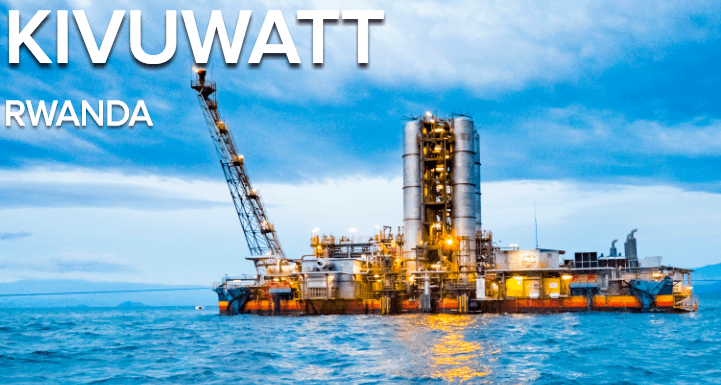
With a surface area of 1,040 square miles (2,700 square kilometers), Lake Kivu is one of the largest lakes in Africa. Sharing a border with the Democratic Republic of Congo and Rwanda, Lake Kivu and the surrounding area offer an interesting geology case study: Its depth reaches almost 2,000 feet (485 meters), and it sits in an area rich in volcanic identity. As a result, this lake has a high concentration of methane gas.
The danger in this region is that the accumulated methane can cause a limnic eruption, a rare geological occurrence in which dissolved gases can erupt from a lake’s depth. The outcome can result in the widespread suffocation of wildlife and humans. Few limnic eruptions, or lake overturns, have occurred in recorded human history. But as a Massachusetts Institute of Technology (MIT) study revealed, geological evidence suggests these events have hit Lake Kivu in the past and could very well fester again in the near future.
But as of December 2015, a power plant launched on the Rwandan side of Lake Kiva could solve two problems: mitigating the risk of such a disaster, while providing a renewable source of power in a country where only 18 to 20 percent of citizens have reliable access to electricity. The KivuWatt plant was officially inaugurated last week, five years after it was first conceptualized.
Wärtsilä, an environmental engineering firm based in Finland, was the lead contractor for this new power plant, which promises to churn Lake Kivu’s “killer gases” into a reliable source of clean energy. Three Wärtsilä engines extract methane gas from the depths of Lake Kivu, which in turn generates 25 megawatts of power. A barge that is anchored 8 miles (13 km) offshore captures and purifies the methane gas, which is then transported to the shore via an underwater pipeline. ContourGlobal, an international developer and operator of electric power and district heating plants, operates KivuWatt. Future plans involve the addition of an additional engine as part of a long-term plan to expand so this plant can generate up to 100 MW of power.
KivuWatt is one example of how twenty years after Rwanda suffered through a genocide that cost the lives of as many as 800,000 people, this landlocked nation of 11.8 million people is on the move. Its current government, led by Paul Kagame, has pursued an economic growth policy that combines a focus on technology with sustainable development. The result is that a country long reliant on subsistence agriculture, with some tea and coffee exports, is now one of the fastest growing economies in the world, with GDP growth averaging 7.5 percent since 2000. The lack of safe and secure, power, however, is a detriment for many Rwandans’ future economic prospects.
Renewables offer potential to expand access to electricity without relying on expensive fossil fuel imports and a grid that would also be difficult and pricey to build. Other clean energy projects underway in Rwanda include a network of small hydropower projects that will contribute an additional 25 MW to the country’s power capacity. The Rwandan government has also entered into an agreement with an international consortium to install rooftop solar on as many as 250,000 homes by 2018. This aggressive renewables program is one part of the Rwandan government’s Vision 2020 Plan, which seeks to build a knowledge-based economy while pushing Rwanda to become a middle-income economy.
Image credit: CounterGlobal

Leon Kaye has written for 3p since 2010 and become executive editor in 2018. His previous work includes writing for the Guardian as well as other online and print publications. In addition, he's worked in sales executive roles within technology and financial research companies, as well as for a public relations firm, for which he consulted with one of the globe’s leading sustainability initiatives. Currently living in Central California, he’s traveled to 70-plus countries and has lived and worked in South Korea, the United Arab Emirates and Uruguay.
Leon’s an alum of Fresno State, the University of Maryland, Baltimore County and the University of Southern California's Marshall Business School. He enjoys traveling abroad as well as exploring California’s Central Coast and the Sierra Nevadas.














